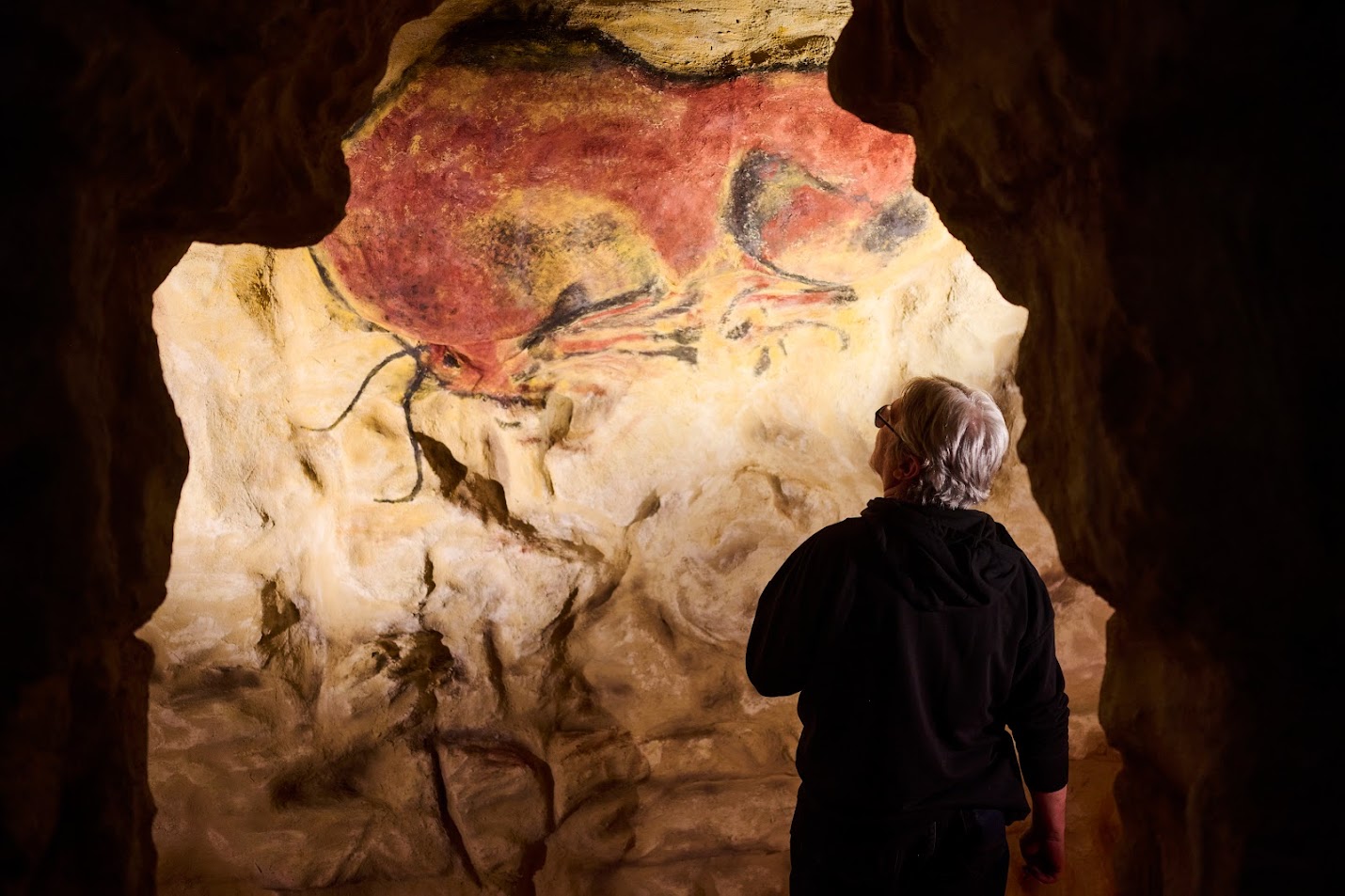If you have taken Painting 101, you know that yellow ochre, sienna, and umber are some of the first paint tubes on the required materials list. Artists blend these pigments with primary colors to create skin tones, warm lighting, and earthy compositions. Each pigment is ground from ochre, an ancient mineral derived from iron in the earth.

Not only is ochre essential to contemporary painters, it is essential to understanding the history of art and the origin of painting.

In the ground, iron oxidizes and tints the earth with various rust tones that we derive to make pigments such as ochre. We tend to think of a golden yellow when thinking about ochre, but depending on the other elements present in the earth, the color can vary from yellow to reddish and brownish. The more manganese oxide there is alongside the iron oxide, the browner the color. This translates into red ochre, purple ochre, brown ochre, sienna, burnt sienna, and umber.
The history of mineral pigment dates back to the origin of human artmaking, 36,000 years ago in prehistoric cave drawings. In fact, Altamira Fine Art is named after the Cave of Altamira in Santillana del Mar (Cantabria region) in northern Spain. This cave is filled with impressions that are particularly famous because they were the first European cave paintings for which a prehistoric origin was suggested and promoted. Altamira was declared a World Heritage Site by UNESCO in 1985.
Prehistoric artists used charcoal and ochre to create the cave paintings, often diluting the pigments to produce variations in intensity and creating an impression of chiaroscuro. These paintings include abstract shapes in addition to animal subjects. They include images of horses and goats, as well as handprints that were created when artists placed their hands on the cave wall and blew pigment over them to leave a negative image. Here we see the true importance of ochre pigment to art history. Without this material, cave dwellings would not have the vibrancy we see in the cave of Altamira.

In 2024, our Contemporary Western artists are still using ochre to materialize their visions.

Mary Roberson, an oil painter based in Idaho, uses ochre to introduce a hint of warmth into her muted compositions. She paints from the beautiful surroundings of Yellowstone and Glacier National Park. These wildlife inspired paintings harken back to the simplistic beauty of prehistoric work.

In this piece, Santa Fe painter Jivan Lee blends ochre with light yellows into an otherwise cool composition to simulate a stream of sunlight hitting a mountain. Lee paints en plein air to capture the landscape in real time.

Arizona artist Howard Post creates warm and vibrant western scenes, mixing warm umber, burnt sienna, and yellow ochre with deep purples and greens to create a dreamy effect. Because of his attention to saturated warm coloring against very cool deep tones, the images are flooded with streams of golden sunlight against blue and purple shadows. He may use up to six colors, painted over a dark background. Strong, orderly shadow patterns cast by the figures of cattle, cowboys, trees, or fences define his work.

Timothy Horn paints rural scenes of the Bay Area California with a sophisticated understanding of light, texture, and perspective. In his golden hour scenes, the use of burnt sienna accompanied by yellow ochre makes the composition light up with vibrant oranges and peach tones. When blended, ochre provides the perfect neutralizing base for oranges and yellows out the tube.
Visit our Artist pages to view additional works.
Lydia Wilkes | July 20, 2024
